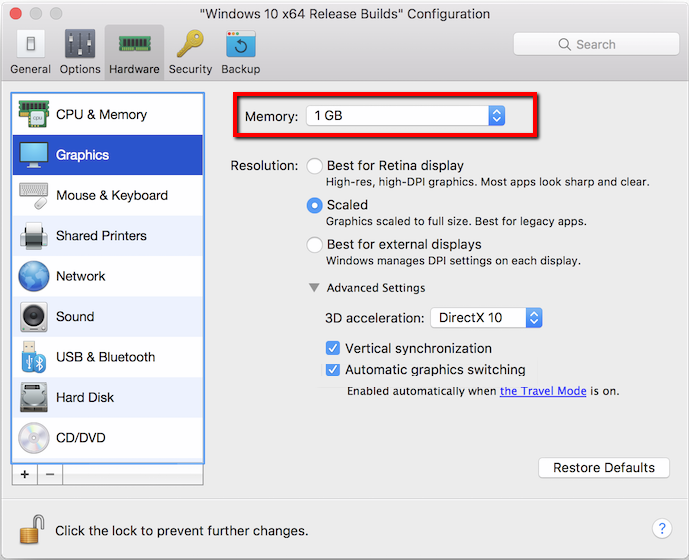Parallels For Mac Windows 10 Renew
Click to expand.I'm trying to move a.pvm file containing Snow Leopard Server from Parallels Desktop 8 on my old Mac to a Parallels Desktop 14 test version on a new Mac. I have done what the article says and clicked 'moved'. Yet a particular software installed within the VM asks me to activate again (which is a problem as that software isn't sold anymore and limited to a maximum amount of activations). This doesn't happen on Parallels 8 on the old Mac, there it still works. So somehow it can still see that it runs on a different machine. What causes this?
Hello, Thank you for your response. The developer doesn't extend the activation possibilities, I'm afraid. Besides that, Parallels Desktop is supposed to be able to keep the virtual environment for a moved VM the same as it has been before, so there shouldn't be any hardware change that the system and software contained in that VM could recognise. Convert mac fonts to windows font foundry. Therefore - and because you are not the developer of the software that complains about activation, but of Parallels Desktop - I haven't asked you to worry about that software, but I have asked you why Parallels Desktop doesn't do what it should do. In the meantime I have done some testing myself: On my new system, I have removed Parallels 14 and then first installed version 10, have it open the VM and update Parallels Tools - after that the software still worked flawlessly. Secondly I installed version 11 and did the same - also there that software ran without issues.
Then I installed version 12 and did the same again. And this is where it went wrong - my software wouldn't start but complain about activation. By comparing the VM's config.pvs files after running it in version 11 and version 12, respectively, I couldn't find any major differences (that is, all UUID's, MAC addresses and so on are the same). So I kindly ask you to dig deeper into this issue in order to get it resolved.
Why does using Parallels 12 and up result in a virtual hardware change? What is that hardware change and how can it be prevented/fixed? Many thanks for your efforts in this matter.
Waterlogue for Mac works with your iPhone. It supports Airprint. Since it exports at high res, the prints from the app are of decent quality, so some artists are using it for exhibits. And in fact is a splendid choice for anyone looking for a photo to watercolor app. PHOTO PAINTER FOR ANDROID. Photo Painter is another fun painting app. Watercolor photo app for mac. You don’t need to paint to create beautiful watercolor images—Waterlogue captures the essence of your photos in brilliant, liquid color. • Waterlogue transforms your photos into luminous watercolors. Aquarella Watercolor. Create luminous watercolors with liquid pools of blended color. Watercolor, or Aquarelle is a wonderful transparent and luminous artistic media. Watch as Aquarella transforms your image into one with liquid pools of color blended fluidly on paper to create a watercolor with all the delicate details found in traditional watercolor media. Use WaterColor Photo can let your photos into watercolor and oil paint effect Function: -Supports Facebook and e-mail so you can easily share your sketches with your friends, as well as save them to your iPhone.

Parallels Desktop 11 For Mac with Windows 10 integration is now available. The release includes a new version of the software for developers, designers and power users, Parallels Desktop for Mac Pro Edition. Sometimes, Mac users need to run Windows software. Maybe there’s a program you need for work that doesn’t offer a Mac version, or maybe you occasionally need to test websites in Internet Explorer. Whatever you need Windows for, Parallels is the best tool for the job.
If you've switched from Windows to a Mac, there's a good chance you want to run some of your old Windows apps, but there's no exact match for them in the Apple-centric world. Even if there's an OS X version of your favorite program, it may work differently than it does on Windows—as the OS X versions of Microsoft Word and Excel apps work differently than their Windows counterparts. This is the problem like Parallels Desktop are designed to solve. Parallels Desktop and are the leading virtualization software for OS X, and both let you run Windows apps on the OS X desktop almost as if they were running on a Windows machine. Parallels offers the deepest integration between Windows apps and OS X systems, and the latest version, Parallels Desktop 12, offers major advances in the depth of its integration with Windows 10.
Combined with impressive speed improvements, Parallels remains the top choice for less technical users, though both Parallels and Fusion have their own advantages. Versions and Pricing Parallels Desktop comes in three versions. The Standard edition (tested here) costs $79.99 for a license that lasts forever, but it doesn't include upgrades to any future versions. The Pro edition, which costs $99.99 per year, adds free upgrades to any future new version and a subscription to the Parallels Access remote-desktop service (normally $20 per year). The Pro version also includes high-level features that I didn't test, including the ability to access a guest OS via or from a browser (if the guest OS is set up as a Web server) and integration with Microsoft Visual Studio and virtualization tools like. There's also a Business edition, which is subscription-based and adds centralized management features, built-in access to cloud services like Dropbox or Box, and 24/7 support—you have to contact the company for pricing quote, however.